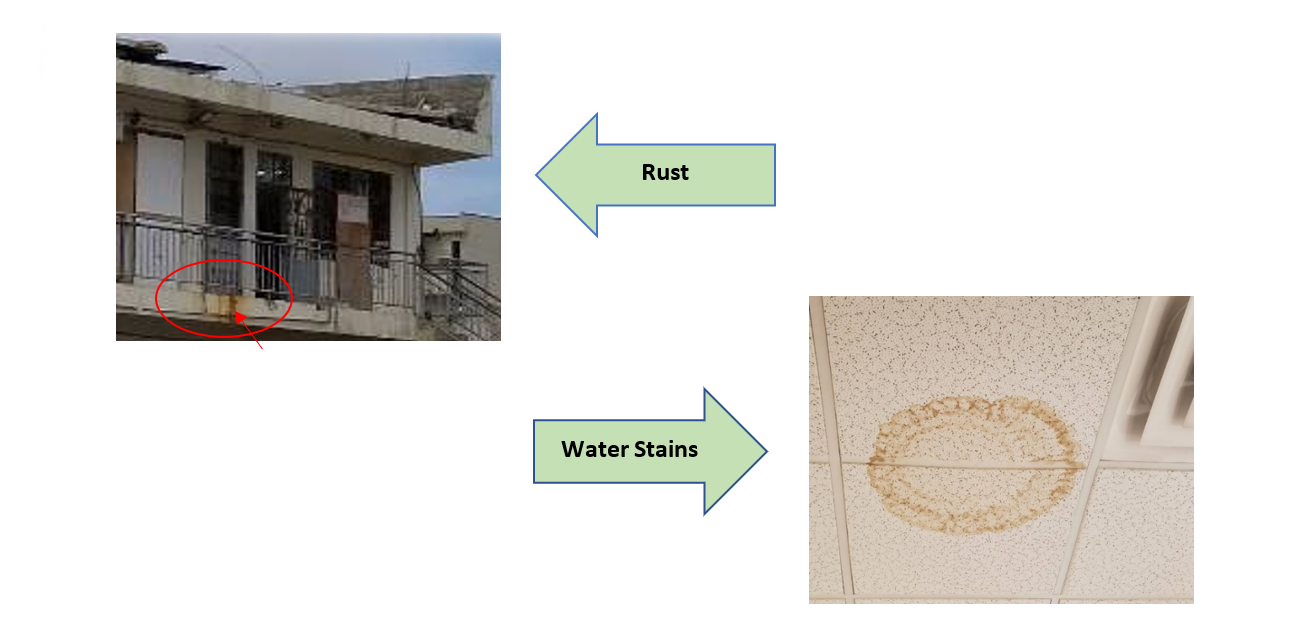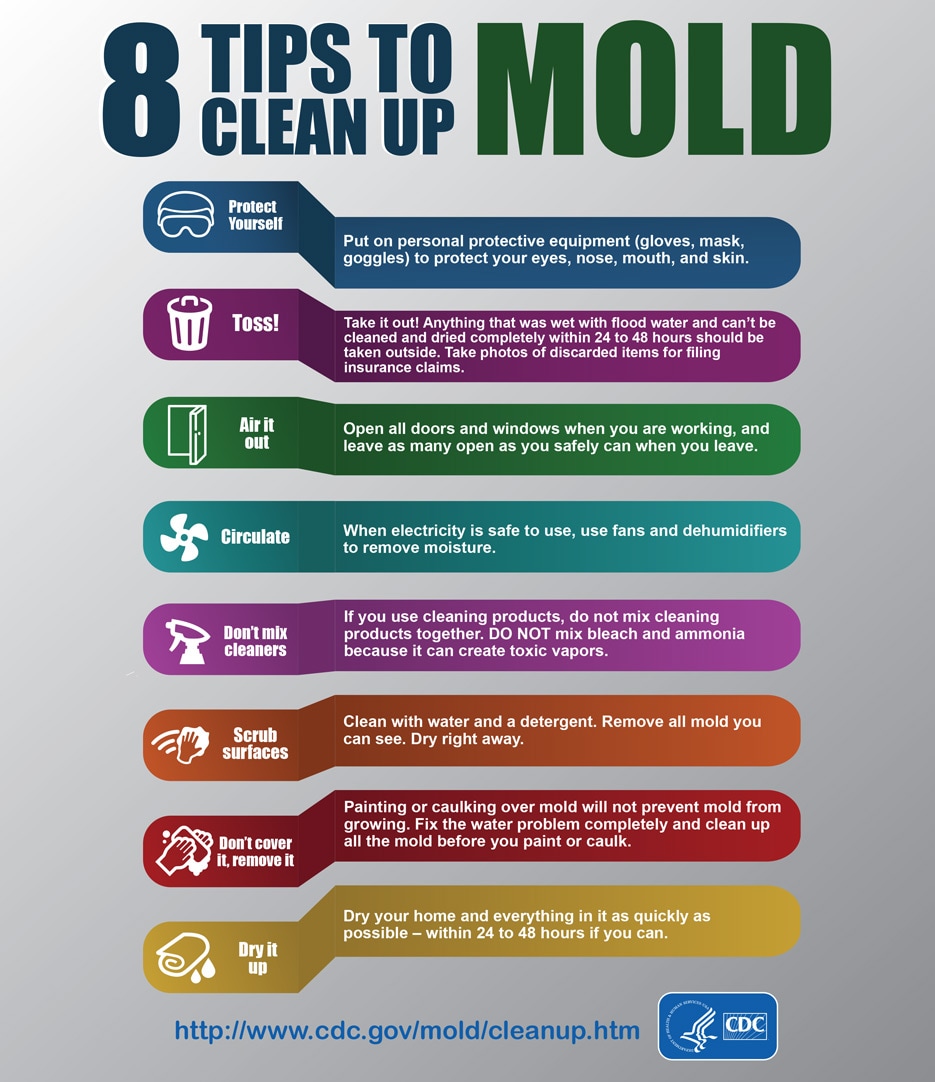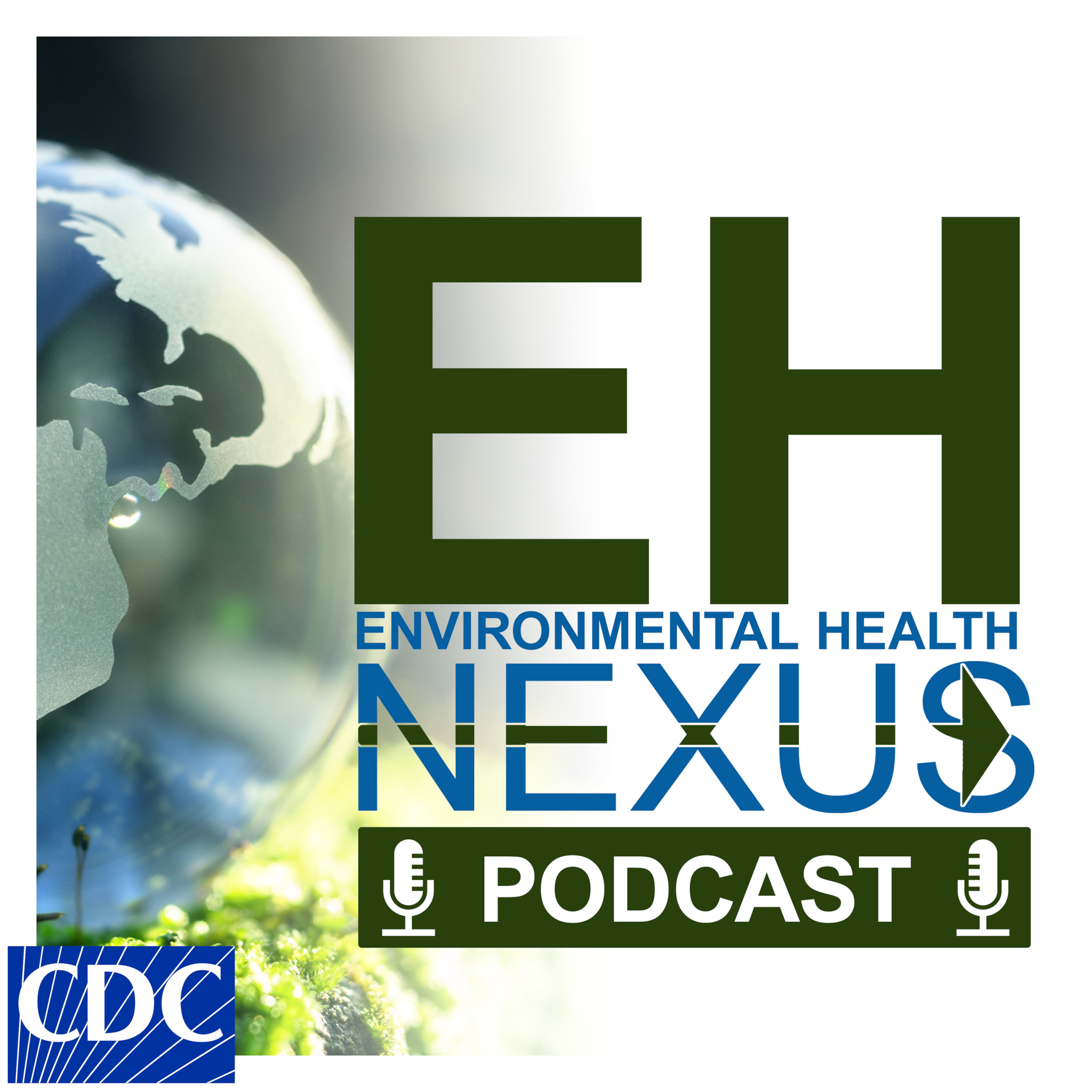CDC Environmental Health Nexus Newsletter
Healthy Environment, Healthy You
June 24, 2022 | Volume 11

CDC Environmental Health Nexus Webinar: Protecting Yourself from Mold: Myths & Facts
Learn how to protect yourself and safely clean up mold after a flood or hurricane. CDC’s Environmental Health Nexus recently hosted a webinar: Protecting Yourself from Mold: Myths & Facts.
CDC’s subject matter experts Ginger Chew and Scott Damon from the National Center for Environmental Health and Amel Omari from the National Institute for Occupational Safety and Health discussed strategies on how to keep you and your community safe from mold exposure, clean up methods, and respirator usage during mold remediation.
This webinar was broadcast on Wednesday, June 22. You can access the webinar recording here.
If the newsletter was emailed directly to you, we thank you for joining our subscription distribution list. If you are not a subscriber, please click here, enter your email address, and click the subscribe button.
Visit the Environmental Health Nexus website for more details.
The Presenters for the Webinar:

Ginger Chew, Sc.D., M.S.P.H., Senior Scientific Advisor
Division of Environmental Health Science and Practice
National Center for Environmental Health

Scott Damon, M.A.I.A., RPCV, Health Communication Lead
Division of Environmental Health Science and Practice
National Center for Environmental Health

Amel Omari, Ph.D., M.P.H., Epidemic Intelligence Service Fellow
Division of Field Studies and Engineering
National Institute for Occupational Safety and Health
There is always some mold around. Molds have been on the Earth for millions of years. Molds are part of the natural environment and can be found everywhere—indoors and outdoors. Mold can get in your home through open doors, windows, vents, and heating and air conditioning systems. Also, mold in the air outside can be brought indoors on clothing, shoes, bags, and even pets.
Mold is not usually a problem unless it begins growing indoors. The best way to control mold growth is to control moisture. Mold grows where there is moisture, usually within 24–48 hours of flooding. Even if it is not visible, it is often present.
Moisture is commonly found around leaks in roofs, windows, pipes, or where there has been a flood. Mold grows on paper, cardboard, ceiling tiles, and wood. Mold can also grow in dust, paints, wallpaper, insulation, drywall, carpet, fabric, and upholstery.
Signs of moisture can look like any of the following:


Mold: What You Need to Know to Reduce Your Risk
Molds have the potential to cause health problems because they produce allergens, substances that can cause allergic reactions and irritants. Inhaling or touching mold or mold spores may cause allergic reactions in sensitive individuals. Allergic reactions to mold are common. They can be immediate or delayed.
Molds can also cause asthma attacks in some people with asthma. In addition, mold exposure can irritate the eyes, skin, nose, throat, and lungs of both mold-allergic and non-allergic people.
All types of molds are considered fungi. People, especially those with weakened immune systems, can develop invasive mold infections days to weeks after exposure to fungi that live in the environment. People with weakened immune systems can become sick with invasive mold infections after hurricanes or floods.
Immune-compromised people and people with chronic lung disease may get infections in their lungs from mold. After a flood, physicians should keep invasive mold infections in mind when treating people who are sick after exposure to mold. Signs and symptoms can vary depending on the patient, the type of mold, and the part of the body affected, but often include the following:
- Fever
- Cough
- Night sweats
- Weight loss
- Shortness of breath
- Sinus symptoms
- Dark scabs, blisters, or ulcers on the skin
Reduce Your Exposure to Mold in Your Home
After a hurricane or major flood, you may have to live in a home with mold in it. This could last for weeks, if you have nowhere else to go, or even months, if your whole community was affected. If you must stay in a moldy home, you need to take steps to reduce your exposure to mold.
Mold can look like spots. It can be many different colors, and it can smell musty. If you see or smell mold, you should remove it. You do not need to know the type of mold.
If mold is growing in your home, you need to clean up the mold and fix the moisture problem. Mold can be removed from hard surfaces with household products, soap and water, or a bleach solution of no more than 1 cup of household laundry bleach in 1 gallon of water.
View these tips from CDC if you use bleach to clean up mold.
CDC does not recommend mold testing. The health effects of mold can be different for different people, so you cannot rely on sampling and culturing to know if you or a member of your family might become sick. The best thing you can do is to safely remove the mold and work to prevent future mold growth. No matter what type of mold is present, you need to remove it.
What to Wear Before Entering a Home or Building with Mold Damage
- Goggles or eye protection
- N-95 respirator or one that provides even more protection (check packaging for “N-95”)
- Long-sleeved shirt
- Protective gloves
- Long pants
- Waterproof boots
CAUTION!
If you have a breathing problem like asthma, do not enter a building with mold damage. Mold can make asthma symptoms worse.
If you have a weakened immune system (such as from cancer treatment or medicines that suppress the immune system), do not enter a building with mold damage. People with a weakened immune system are more likely to get a serious illness from mold.
Children should also not enter buildings with mold damage.
Additional Resources to Protect Yourself and Others from Mold Exposure
Below are useful resources to educate and prepare yourself and your family.
- Facts About Stachybotrys Chartarum – a Greenish-black Mold
- Hurricane-Associated Mold Exposures Among Patients at Risk for Invasive Mold Infections After Hurricane Harvey — Houston, Texas, 2017
- Dampness and Mold in Buildings
- Homeowner’s and Renter’s Guide to Mold Cleanup After Disasters
Thank you for reading. Do not keep this great resource to yourself! Please share it with your colleagues and networks.
If you are not yet a subscriber, please click here, enter your email address, and click the subscribe button at the bottom of the webpage.

